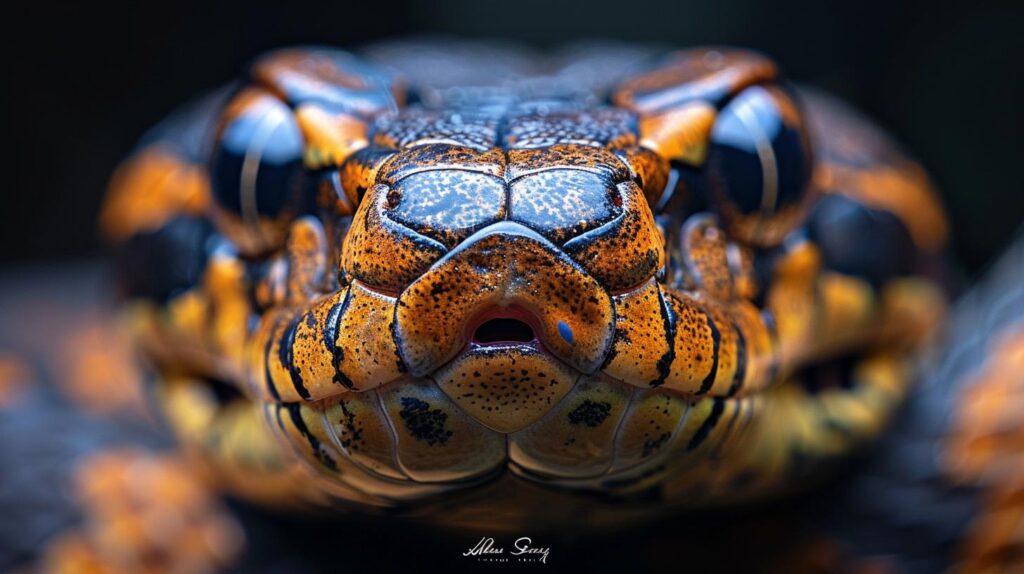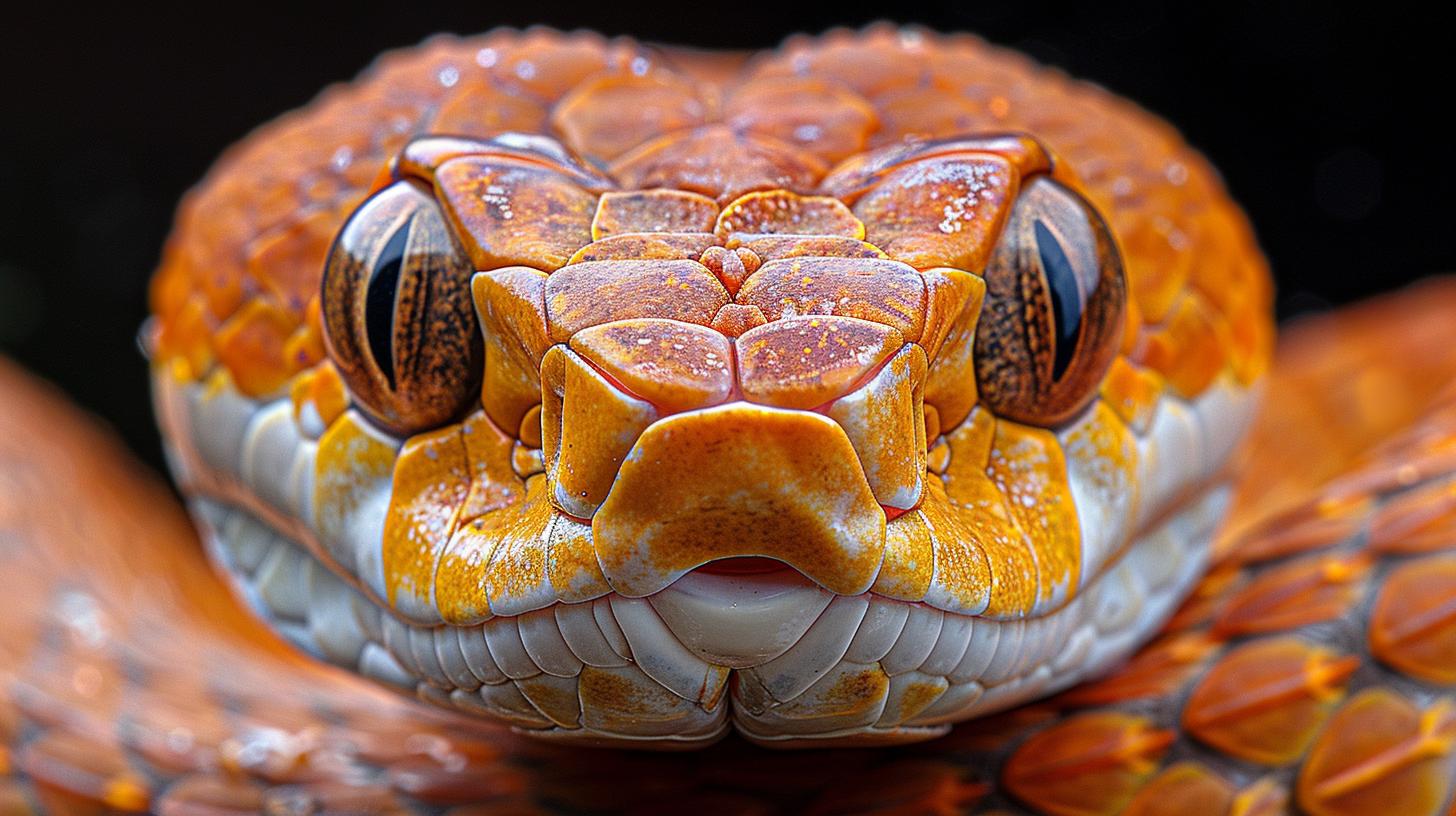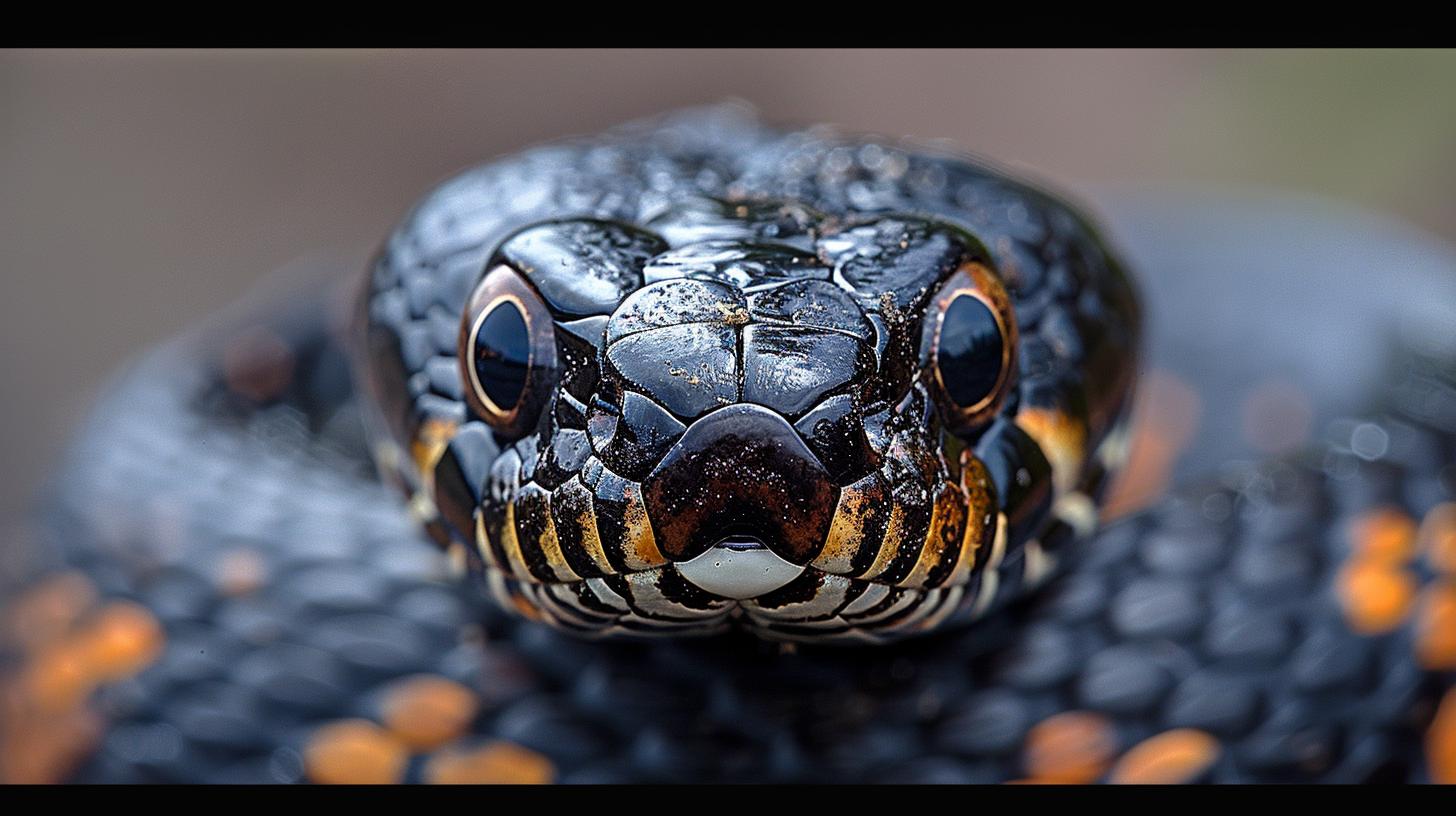Recognizing Stress Signs in Your Pet Snake

Understanding Your Serpentine Friend
In the delicate balance of pet care, recognizing snake stress symptoms is pivotal to maintaining the health and happiness of your serpentine companion. Navigating through the silent language of snakes requires a thorough understanding of their behavior and physiology.
This foundational knowledge isn't just about fostering a strong bond with them; it's critical for identifying any deviations from their normal state which could signal distress or discomfort. When these signs are overlooked, it might not only dampen the quality of life for these fascinating creatures but also escalate into more severe health issues.
The importance of stress in snakes cannot be understated. Unlike other pets who can vocalize discomfort or ailment, snakes exhibit subtler cues that necessitate keen observation from their caretakers. Elevated stress levels can significantly hamper a snake's immune system, leaving it susceptible to diseases and reducing its overall vitality. Such an impact on their wellbeing underscores why caregivers must be vigilant in creating an environment that mirrors their natural habitat as closely as possible, minimizing potential stress triggers.
Addressing common causes of stress in pet snakes is as crucial as recognizing the symptoms themselves. Factors ranging from inadequate habitat conditions-like improper temperature gradients or humidity levels-to lifestyle stressors such as excessive handling or insufficient hiding spaces can greatly influence a snake's stress levels.
By honing in on these aspects from the onset, enthusiasts and owners alike can ensure they're providing an optimal setting conducive to their pet's health and longevity. Next, identifying and responding to signs of distress plays a fundamental role in averting more serious ailments, thereby enriching the quality of care bestowed upon these captivating reptilian friends.
The Significance of Stress in Snakes
Stress, often underestimated in its significance, plays a colossal role in the well-being of your pet snake. Much like humans, snakes can experience stress which can have profound effects on their health and behavior. Understanding the implications of stress is fundamental to ensuring the long-term health and happiness of these reptilian pets.
Elevated levels of stress can undermine a snake's immune system, making them more susceptible to diseases, parasites, and infections. It's essential to know that persistent stress isn't just about immediate discomfort; it poses a serious threat to their overall health.
Identifying *snake stress symptoms* is key to addressing and mitigating these issues before they escalate into severe health conditions. Behavioral changes are often the first indicators and can include increased aggression or defensiveness, frequent hiding, or unusual lethargy. Physical symptoms might manifest as skin problems or changes in body weight while alterations in eating patterns could indicate your snake is feeling stressed. Recognizing these signs early on allows for quicker action to alleviate their discomfort.
Addressing the causes behind *snake stress symptoms* requires a comprehensive understanding of what elements in their environment could be contributing factors. Common sources of stress for captive snakes include:
- Improper Habitat Conditions: Inadequate temperature gradients or humidity levels that do not mimic a snake's natural habitat closely enough.
- Lack of Hiding Spaces: Insufficient cover within the enclosure leaves snakes feeling vulnerable.
- Excessive Handling: Over-handling can leave snakes feeling threatened and stressed.
- Environmental Changes: Even seemingly minor changes within or around their enclosure can cause distress.
Recognizing these cues necessitates close observation and an awareness of one's pet's usual behaviors and preferences. While immediate adjustments can alleviate some stressors-like modifying enclosure parameters or reducing handling frequency-identifying less obvious triggers often involves careful consideration and sometimes trial-and-error.
This section provides groundwork for understanding why vigilance in monitoring for *snake stress symptoms* cannot be overstated. The shift that follows will delve into actionable measures owners can take upon identifying signs of distress, alongside practical advice on cultivating an environment conducive to minimizing stressful experiences for their serpentine companions. This preemptive approach not only enhances your snake's quality of life but also strengthens the bond shared between pet and owner through attentive care and mutual trust.
Common Causes of Stress in Pet Snakes
Understanding the various stressors that can affect your pet snake is pivotal in maintaining its health and wellbeing. Just as with any pet, stress in snakes can lead to a myriad of health issues, some more severe than others. Identifying these stress triggers early is essential.
One primary cause of stress in pet snakes is *improper habitat conditions*. Snakes have specific needs regarding temperature, humidity, and lighting, varying significantly from one species to another. A habitat too cold or too hot can inhibit their ability to digest food properly, leading to discomfort and stress.
Similarly, incorrect humidity levels can cause respiratory problems or shed issues, adding to their stress levels. Therefore, it's crucial for snake owners to meticulously research and maintain optimal habitat conditions tailored to their snake's species.
Another common source of stress arises from excessive handling. While some snakes tolerate moderate handling well, others might find it threatening, leading to elevated *snake stress symptoms*. Signs include hissing, trying to escape, or even refusing food after being handled. It's paramount for owners to recognize their individual snake's tolerance levels towards handling and adjust accordingly.
Lastly, a lack of adequate hiding places within the habitat can contribute significantly to a snake's stress. In the wild, snakes use hiding spots for safety and rest. Absence or insufficiency of such spaces in captivity can leave them feeling exposed and vulnerable continuously. Incorporating multiple hiding spots of varying sizes allows your snake to retreat when they feel the need to escape from view.
- Improper Habitat Conditions
- Excessive Handling
- Lack of Hiding Places
Addressing these factors early on by ensuring ideal living conditions and respecting your pet's boundaries goes a long way in mitigating snake stress symptoms before they escalate into more serious health concerns. The next section discusses how precisely you might identify these signs of distress and what they could mean about your serpentine companion's overall state of well-being.

Identifying Snake Stress Symptoms
Understanding the nuances of snake behavior is key to identifying when your serpentine companion might be feeling stressed. Although snakes are often perceived as low-maintenance pets compared to cats or dogs, they require a keen eye to notice changes in their health and wellbeing.
Recognizing snake stress symptoms early on is crucial for addressing any issues before they escalate into more serious health problems. The ability to discern between normal, daily behavior and signs of distress can mean the difference between a healthy, happy snake and one that is suffering in silence.
Stress in snakes can be subtler than in other pets, manifesting in ways that are not immediately obvious to even the most attentive owners. Understanding these indicators requires not only familiarity with your snake's typical behavior and habits but also an appreciation of how environmental factors can impact their psychological state. This awareness forms the foundation for creating a nurturing environment that minimizes stress triggers, thereby safeguarding your snake's health.
Behavioral Changes
One of the first signs of stress you may notice in your pet snake involves alterations in their usual behavior patterns. Snakes displaying stress symptoms might become either more aggressive or unusually withdrawn.
They could start striking or hissing when approached-behaviors not typically observed during regular handling sessions-or perhaps you'll notice them attempting to hide more frequently than is characteristic for their species. Moreover, an increased effort to escape from their enclosure signals heightened discomfort or anxiety about their current environment.
Physical Indications
Physical symptoms also accompany the behavioral signals of stress in snakes. A clear indication is changes in skin appearance; stress might lead to duller skin colors or even result in shedding issues such as incomplete sheds, which are both direct manifestations of poor health due to elevated stress levels. Additionally, watch for signs like rapid breathing or changes in muscular tension since these could indicate your pet is under duress.
Nutritional Patterns and Eating Habits
Alterations in eating habits provide another critical clue when diagnosing snake stress symptoms A decrease in appetite often accompanies stress, but so too can a complete refusal of food-a sign that should never be ignored given its implications on a snake's health if prolonged.
Conversely, excessive eagerness for food followed by regurgitation can also signify that something isn't quite right with your pet's emotional state or physical wellbeing. Monitoring these eating behaviors closely will allow timely intervention before substantial health concerns develop.
Understanding and recognizing these symptoms as part of broader care practices help ensure you're providing the best environment possible for your reptile companion's long-term welfare.
Immediate Actions to Alleviate Snake Stress
When you notice snake stress symptoms, it's vital to act quickly to mitigate the risk to your pet snake's health. Addressing the signs early can make a significant difference in their overall wellbeing and prevent long-term issues. Immediate actions involve adjusting several aspects of their environment and daily handling, which, when executed properly, can alleviate their stress significantly.
Firstly, evaluate the conditions within your snake's habitat. Critical factors such as temperature, humidity, and lighting should be at optimal levels for your specific breed of snake. For instance, if the habitat is too cold or too warm, it could cause discomfort and stress for your reptilian friend.
Make the necessary adjustments to mimic their natural environment as closely as possible. Moreover, ensure there are ample hiding spots within the enclosure to provide a sense of security for your snake.
| Parameter | Optimal Condition |
|---|---|
| Temperature | Varies by species |
| Humidity | 40-70%, depending on species |
| Hiding Spots | At least two per enclosure |
Adjusting how frequently you handle your snake can also play a crucial role in reducing stress levels. If your pet is showing signs of discomfort with regular handling - such as attempting to escape or displaying defensive behavior like hissing - it may be advisable to decrease interaction times temporarily. Providing a calm and quiet environment without sudden movements or loud noises will further help in creating a more secure atmosphere for them.
It's also wise to consider diet-related issues that might contribute to stress in snakes. Skipping meals or offering food that is incorrect in size or type can result in nutritional deficiencies or feeding difficulties, thereby elevating stress levels. Ensuring regular feedings with appropriate prey items tailored specifically for your snake's dietary needs is essential.
Incorporating these immediate actions into your care routine upon noticing *snake stress symptoms* stands as an effective first line of defense against escalating stress levels in pet snakes. Adjustments made promptly can aid significantly in calming stressed snakes, helping them return to their standard behavior patterns and appetite levels quickly.
However, while these steps are critical in managing acute manifestations of stress in serpentine pets, they represent only part of the solution towards achieving long-lasting well-being for your snake.
Long-Term Strategies for a Stress-Free Snake
Keeping your pet snake free from stress is not just about responding to immediate signs of discomfort; it's also about implementing long-term strategies to ensure their overall wellbeing. A consistent approach focused on preventative measures can significantly reduce the likelihood of stress-related health issues, making life more pleasant for both you and your serpentine companion. Understanding that reptiles, particularly snakes, require a specific set of environmental and dietary conditions to thrive is pivotal in this process.
Cultivating an environment that mirrors a snake's natural habitat as closely as possible will go a long way toward minimizing stress. This encompasses everything from temperature and humidity levels to the arrangement of space within their enclosures.

Crafting the Ideal Habitat
A cornerstone of fostering a stress-free environment for your snake involves meticulously designing their living space. This goes beyond mere aesthetics or convenience; it directly impacts your snake's psychological welfare. Ensuring the enclosure is spacious enough allows your snake to explore and exercise, which is crucial for mental stimulation and physical health.
Temperature gradients within the enclosure are equally vital, allowing your snake to regulate its body temperature by moving between warmer and cooler areas, much like it would in the wild. Additionally, providing ample hiding spots gives snakes a sense of security, fulfilling their instinctual need for concealment.
Regulating Interaction
While forming a bond with your pet snake can be rewarding, understanding their preferences for interaction is essential in avoiding undue stress. Overhandling, especially in species that are naturally solitary or defensive, can lead to elevated snake stress symptoms It's crucial to recognize and respect your snake's signals-such as hissing or retreating-indicating they desire alone time.
Establishing a handling schedule that aligns with your pet's temperament encourages trust and minimizes stress-induced reactions. Remember, each snake has a unique personality; what works for one may not suit another.
Nutrition Tailored to Individual Needs
Diet plays an immense role in the wellbeing of pet snakes, directly influencing their health and stress levels. Offering food items that closely resemble what they would consume in the wild contributes to both physical health and psychological satisfaction.
However, variety is just as important; providing different prey items can help prevent nutritional deficiencies and behavioral issues related to boredom or dissatisfaction with food. Monitoring feeding frequency and portion sizes according to species-specific needs ensures that your snake maintains optimal weight without experiencing hunger-induced stress or obesity-related distress.
Implementing these strategies requires attention to detail but establishes a stable foundation for your pet's longevity and happiness. By consistently evaluating and adjusting care practices based on individual responses and needs, owners can create an enriching environment where snakes thrive without undue stress.
When to Seek Professional Help
In recognizing the stress signs in your pet snake, mastering the nuances of their behavior and health symptoms is pivotal. Given these insights, our journey through understanding our serpentine companions embarks on a crucial ending note: discerning when to seek professional help.
Acknowledging snake stress symptoms isn't just about immediate interventions-it's also about recognizing when these signs point toward deeper health concerns that necessitate a veterinarian's expertise. Especially for reptile enthusiasts, distinguishing normal from abnormal behavior becomes a testament to their dedication and care towards ensuring the wellbeing of their slithery friends.
Addressing snake stress symptoms requires a blend of knowledge, observation, and action. From adjusting habitat conditions to fine-tuning handling practices, each step plays a role in mitigating stress levels. However, it's the long-term strategies that truly lay the foundation for a thriving environment for your pet snake.
Regular monitoring and creating a stable environment can significantly lessen the probability of stress-related issues escalating into serious health problems. Yet, even with meticulous care and prevention efforts, certain situations will demand professional veterinary intervention-making it imperative for owners to be proactive in seeking advice and treatment from reptile-savvy veterinarians.
As you endeavor to provide a serene haven for your pet snake, let this article serve as both a guide and an invitation to delve deeper into understanding and nurturing your unique companion. Our website hosts a wealth of articles dedicated to enhancing your proficiency in reptile care-each designed to equip you with the necessary tools to foster a fulfilling life for both you and your pet.
For more insights and expert guidance on creating an enriching environment for your serpentine friend, we encourage you to continue exploring our site's resources today.
Frequently Asked Questions
How Do You Calm a Stressed Snake?
To calm a stressed snake, it's important to minimize handling and create a quiet, peaceful environment. Ensure that its habitat is set up correctly with proper heating, hiding places, and humidity levels.
Sometimes, covering the enclosure with a light cloth can help reduce stress by limiting visual disturbances from the surrounding area. Regular, gentle handling might also help your snake become more accustomed to human interaction over time.
Do Snakes Shed When Stressed?
Yes, snakes may shed more frequently when they are stressed. This phenomenon occurs because stress can disrupt their normal metabolic processes, leading to irregular shedding cycles. If you notice an increase in shedding frequency accompanied by other signs of stress or poor health, it might be time to assess environmental factors or consult a veterinarian for further advice.
How Can I Tell if My Snake Is Hurt?
If your snake is hurt, you might notice several signs including lethargy, refusal to eat, visible wounds or abrasions on its body, abnormal shedding or discoloration of the skin. A hurt snake might also exhibit unusual behavior such as hissing or aggression when it's normally docile. Visible changes in posture or movement like limping can indicate discomfort as well.
What Happens if You Don't Handle Your Snake?
If you don't handle your snake regularly, it may become less accustomed to human interaction, which could result in increased stress or aggression during future handling attempts. Lack of regular handling might also lead to missed opportunities for bonding and potentially make routine health checks more challenging.
What Happens if a Snake Gets Too Stressed?
Excessive stress in snakes can lead to various adverse effects like immune suppression making them more susceptible to disease outbreaksRapid worsening of existing health problems if any; behavioral changes such as increased aggressiveness or avoidance behaviors; and even issues with feeding like refusing to eat are common under extreme stress conditions.
What Are the Behaviors of Reptiles During Stress?
During periods of stress, reptiles including snakes might exhibit several behaviors such as hiding more than usual, decreased activity levels or lethargyFrequent attempts to escape their enclosure; aggressive reactions when approached or handled; changes in eating habits either reduced appetite or complete refusal of food; and excessive shedding can be observed in some cases indicative of heightened stress levels.
Leave a Reply
You must be logged in to post a comment.